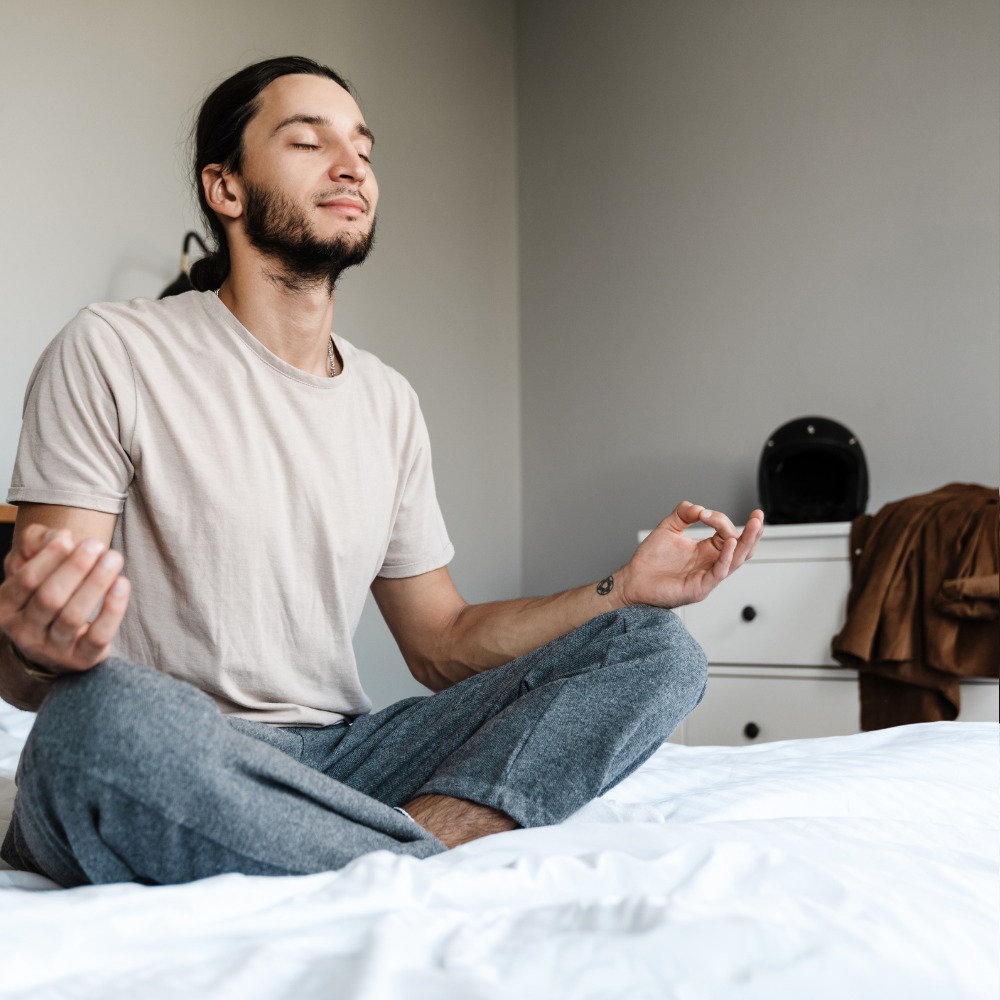Disclosure:
Thank you for reading this post, don't forget to subscribe!
Some of the links on this website are affiliate links. This means that if you click on the link and make a purchase, we may receive a small commission at no extra cost to you. Your support helps us keep the site running.Learn more on my Privacy Policy and Affiliate Disclosure page. Thank you for your support!

“Mindfulness isn’t difficult. We just need to remember to do it.” — Sharon Salzberg
In today’s fast-paced world, where the constant rush of daily life can leave us feeling overwhelmed, mindfulness offers a much-needed respite. More than just a buzzword, mindfulness is a practice with profound implications for mental and emotional well-being. As people increasingly seek ways to reduce stress and enhance their quality of life, mindfulness has emerged as a powerful tool. This post delves into the essence of mindfulness, exploring various techniques that can be easily integrated into daily routines to foster a more centered and fulfilling life.
1.Understanding Mindfulness
Definition of Mindfulness
Mindfulness is the practice of being fully present and engaged in the moment, aware of your thoughts, feelings, and surroundings without judgment. Originating from ancient Buddhist traditions, mindfulness has been adapted into modern secular practices, particularly in the realm of psychology and wellness. While often confused with meditation, mindfulness is broader and can be practiced in various forms beyond sitting quietly with your eyes closed. Meditation is a method to cultivate mindfulness, but mindfulness can also be practiced during everyday activities, such as eating, walking, or even washing dishes.
read next: How to Start a Meditation Practice: A Guide for Beginners.
Benefits of Mindfulness
Research has extensively documented the benefits of mindfulness, making it a cornerstone of modern mental health practices. Regular mindfulness practice is linked to reduced stress, as it helps break the cycle of rumination that often exacerbates anxiety and tension. Moreover, mindfulness enhances focus and concentration, allowing individuals to perform tasks with greater efficiency and clarity. It also promotes emotional regulation, making it easier to manage intense emotions and respond to situations with greater calm and clarity. The benefits extend to physical health as well, with mindfulness practices linked to lower blood pressure, improved sleep, and even enhanced immune function.
read more about: The Health Benefits of Mindful Breathing for Stress Reduction
2.Mindfulness Techniques for Daily Practice
A.Meditation
Overview of Meditation
Meditation is one of the most common ways to practice mindfulness. There are several types of meditation, each with its unique focus and technique. Guided meditation involves following a teacher’s instructions, often through audio recordings, and can be particularly helpful for beginners. Transcendental meditation uses a mantra—a specific word or phrase repeated silently—to help the mind settle into a state of restful awareness. Mindfulness meditation focuses on observing thoughts, emotions, and bodily sensations as they arise, without getting caught up in them.
Learn more about: Unlocking the Secrets: The Science Behind The Mind-Body Connection.
How to Practice
Starting a meditation practice is simpler than it might seem. Begin by finding a quiet place where you won’t be disturbed. Sit in a comfortable position, close your eyes, and take a few deep breaths to center yourself. Focus on your breath, noticing the sensation of air entering and leaving your nostrils. If your mind wanders, gently bring your attention back to your breath without judgment. Start with just 5-10 minutes each day, gradually increasing the duration as you become more comfortable with the practice.
Tips for Success
Creating a conducive environment is key to a successful meditation practice. Choose a quiet space where you can relax without distractions. Consistency is also crucial—try to meditate at the same time each day to establish a routine. Whether it’s first thing in the morning or before bed, find a time that works for you and stick to it.
Check out: Transform Your Mind | Calm-Meditation for Beginners.
B.Breathing Exercises

Importance of Breath
The breath is a powerful anchor for mindfulness. By paying attention to your breath, you can quickly bring your mind back to the present moment, making it an effective tool for stress relief and mental clarity. Breath is directly linked to the nervous system, so by controlling your breath, you can influence your state of mind and body.
Techniques to Try
Several breathing exercises can help cultivate mindfulness. Deep breathing involves inhaling slowly through the nose, allowing your belly to rise, and then exhaling slowly through the mouth. Box breathing is a technique where you inhale for four counts, hold for four counts, exhale for four counts, and hold again for four counts before repeating. The 4-7-8 technique is another method where you inhale for four counts, hold for seven counts, and exhale for eight counts. These techniques can be practiced anywhere, making them ideal for quick stress relief.
Find out more about: Mindfulness meditation-A research-proven way to reduce stress: american psychological association.
Practical Application
Breathing exercises can be incorporated into your day whenever you need a moment to reset. Try deep breathing during a work break, practice box breathing before a stressful meeting, or use the 4-7-8 technique to help wind down before bed. These exercises are versatile and can be tailored to fit any situation.
C.Mindful Eating

Concept of Mindful Eating
Mindful eating is the practice of bringing full attention to the experience of eating. It involves savoring each bite, noticing the flavors, textures, and aromas, and paying attention to how your body feels as you eat. This practice not only enhances the enjoyment of food but also promotes better digestion and healthier eating habits.
discover more about: The Science Behind Morning Habits-Unlocking Your Brain’s Potential for a Productive Day.
How to Practice
To practice mindful eating, start by eliminating distractions during meals—no phones, TVs, or computers. Take a moment to appreciate the food in front of you, noticing its colors and smells. As you eat, chew slowly, and pay attention to the taste and texture of each bite. Notice how your body feels, and stop eating when you feel satisfied, rather than when your plate is empty.
Suggestions for Implementation
Begin by incorporating mindful eating into one meal per day. This could be breakfast, lunch, or dinner—whichever meal you typically rush through. As you practice, reflect on how this mindful approach affects your eating experience and overall well-being. Over time, you can extend this practice to other meals, creating a more intentional and enjoyable relationship with food.
3.Incorporating Mindfulness into Daily Life

Creating a Mindfulness Routine
Incorporating mindfulness into your daily life doesn’t require a complete overhaul of your schedule. Instead, it’s about finding small moments throughout the day to practice mindfulness. This could be as simple as starting your day with a few minutes of meditation, practicing mindful breathing during your commute, or taking a moment to stretch and breathe deeply during breaks. The key is consistency—making mindfulness a regular part of your routine so that it becomes a natural and effortless habit.
further reading: Effects of Mindfulness on Psychological Health-A Review of Empirical Studies
Mindfulness in Everyday Activities
Mindfulness isn’t limited to formal practices like meditation or breathing exercises; it can be integrated into everyday activities. You can practice mindfulness while walking by paying attention to the sensation of your feet touching the ground, the rhythm of your breath, and the sights and sounds around you. When doing chores like washing dishes or folding laundry, focus on the task at hand, noticing the movements, textures, and sensations involved. Even during conversations, practicing mindful listening—fully focusing on what the other person is saying without thinking about your response—can enhance your interactions and relationships.
Apps and Resources
For those looking to deepen their mindfulness practice, there are numerous apps and resources available. Apps like Headspace, Calm, and Insight Timer offer guided meditations, mindfulness exercises, and daily reminders to help you stay on track. Books such as “Wherever You Go, There You Are” by Jon Kabat-Zinn and “The Miracle of Mindfulness” by Thich Nhat Hanh provide valuable insights and practical advice for incorporating mindfulness into everyday life. Online courses and workshops can also offer structured guidance and community support.
explore more:
4.Overcoming Common Challenges
Addressing Misconceptions
One of the biggest misconceptions about mindfulness is that it requires a lot of time or that it’s only for those who can sit still for long periods. In reality, mindfulness can be practiced in just a few minutes a day, and it doesn’t require you to sit in silence. It’s about being present in whatever you’re doing, whether it’s a 10-minute meditation or a mindful walk in the park. Another misconception is that mindfulness is about clearing the mind of all thoughts. On the contrary, mindfulness involves observing your thoughts without getting caught up in them, allowing you to respond more thoughtfully to whatever arises.
Dealing with Distractions
Distractions are inevitable, especially when starting a mindfulness practice. The key is not to resist or judge these distractions but to acknowledge them and gently bring your focus back to the present moment. If you find your mind wandering during meditation, simply notice the thought and return your attention to your breath. Over time, this practice of returning to the present moment will become easier, and you’ll find it easier to stay focused.
Staying Committed
Staying committed to a mindfulness practice can be challenging, especially in the face of busy schedules and the demands of daily life. It’s important to remember that mindfulness is a journey, not a destination. Progress might be slow at first, but with patience and persistence, the benefits will become more apparent. Setting small, achievable goals—such as meditating for five minutes each morning—can help build momentum. It’s also helpful to remind yourself of the benefits of mindfulness, both through personal reflection and by reading about the experiences of others who have integrated mindfulness into their lives.
Conclusion
Mindfulness offers a powerful way to navigate the stresses and challenges of modern life. Whether through meditation, breathing exercises, or mindful eating, incorporating mindfulness into your daily routine can lead to significant improvements in mental, emotional, and physical well-being. By starting with just one technique and practicing it regularly, you can begin to experience the transformative power of mindfulness in your own life. Remember, the journey of mindfulness is personal and unique—take it one step at a time, and let the practice unfold naturally.
Recommended Reading:
- “Wherever You Go, There You Are” by Jon Kabat-Zinn
- “The Miracle of Mindfulness” by Thich Nhat Hanh
Learn more about:
HEALTH / WELLNESS / FITNESS / NUTRITION / BLOG
SHARE TIS POST











